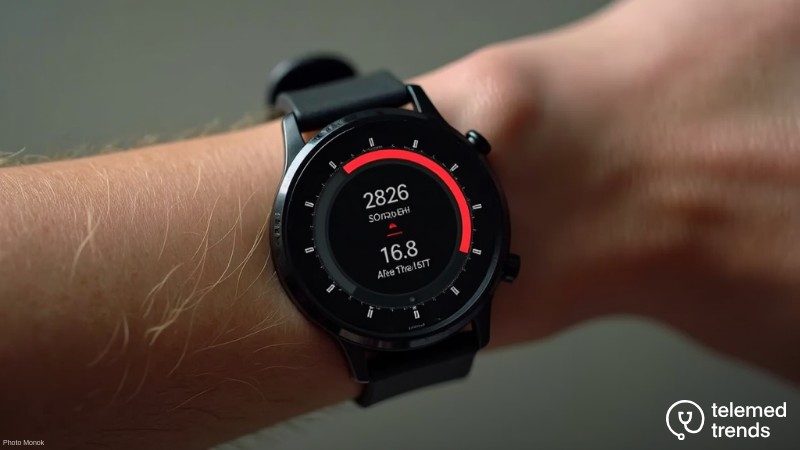Wearable technology has transformed daily life by enhancing health monitoring, entertainment, and activity tracking. These devices, including smartwatches, fitness trackers, medical wearables, and smart clothing, use sensors, microprocessors, and internet connectivity to collect real-time data and sync with mobile devices for detailed analysis.
As wearable technology evolves, it will expand beyond health and entertainment, transforming healthcare, sports, fashion, and work. Advanced sensors, AI, and edge computing will keep wearables essential for enhancing convenience, safety, and well-being.
Key Takeaways
Wearable tech is transforming health monitoring, fitness tracking, and entertainment through advanced sensors and AI.
- Health wearables like smartwatches provide continuous updates on vital signs and support remote monitoring for chronic conditions.
- Innovations in biosensors enable edge computing within wearable devices, reducing power consumption and enhancing privacy.
- Wearable technology is expanding into areas such as augmented reality glasses, energy-harvesting devices, and brain-computer interfaces.
Health and fitness monitoring
Health monitoring remains one of the most significant applications of wearable technology. Devices like smartwatches and fitness trackers provide users with continuous updates on heart rate, blood pressure, sleep quality, and calorie intake.
Epidermal skin technology, such as the Terasaki Institute’s e-skin patch, takes this a step further by enabling remote monitoring for chronic conditions like diabetes and heart disease. During the COVID-19 pandemic, wearables gained widespread attention for tracking heart rate fluctuations and other vitals, helping users stay informed about their health.
Fitness enthusiasts benefit from advanced tracking features, such as the OnePlus Watch 3’s dual-frequency GPS, which provides precise outdoor activity monitoring. This smartwatch supports over 100 sports modes, including running, swimming, hiking, and yoga, while also evaluating fat and carbohydrate consumption to optimize workout efficiency. Its 60-second Health Check-In quickly assesses key health metrics like SpO2, vascular health, and mental wellness, making it a powerful tool for fitness and health management.
Innovations in wearable biosensors
Recent advancements in wearable biosensors are pushing the boundaries of digital healthcare. One major challenge has been the lack of computing capabilities in current sensors and their mechanical mismatch with soft human tissues, leading to motion artifacts.
To address this, a research team led by Professor Shiming Zhang at the University of Hong Kong (HKU) developed a revolutionary wearable in-sensor computing platform. This platform is built on organic electrochemical transistors (OECTs), a microelectronic device designed for bioelectronics applications.
The HKU team created a standardized fabrication process to make OECTs stretchable, allowing seamless integration of sensing, computing, and flexibility into a single hardware entity. This innovation enables edge computing, where data is processed locally within the wearable device.
As a result, power consumption is significantly reduced, privacy is enhanced, and users receive faster feedback without relying on external devices or network connectivity. The team also developed a multi-channel printing platform for scalable sensor production, demonstrating real-time measurement of human electrophysiological signals with stable, low-power computing even during motion.
Entertainment and smart clothing
Beyond health and fitness, wearable technology has transformed entertainment and fashion. VR headsets like the Oculus Quest and PlayStation VR offer immersive gaming and virtual experiences.
Smart clothing, such as Levi’s Project Jacquard jacket, allows users to control calls, music, and even take photos directly from their sleeves. This integration of technology into everyday fashion highlights how wearables are becoming more functional and stylish.
Sports enthusiasts also benefit from wearable technology embedded in athletic gear. GPS and Bluetooth-linked devices integrated into sports apparel or equipment provide real-time performance data, allowing coaches and athletes to make informed decisions during training and competitions.
Popular brands like Fitbit, Apple Watch, Garmin, and Samsung Galaxy Watch continue to lead the market with advanced features for fitness tracking and health monitoring.
Future of wearable technology
The future of wearable technology promises even more groundbreaking advancements. Innovations like Apple Glasses for augmented reality experiences, energy-harvesting wearables that convert body heat into power, and smart contact lenses delivering real-time information are on the horizon.
Companies like Neuralink and Meta are also developing brain-computer interfaces that could revolutionize how humans interact with technology, particularly in healthcare and communication.






